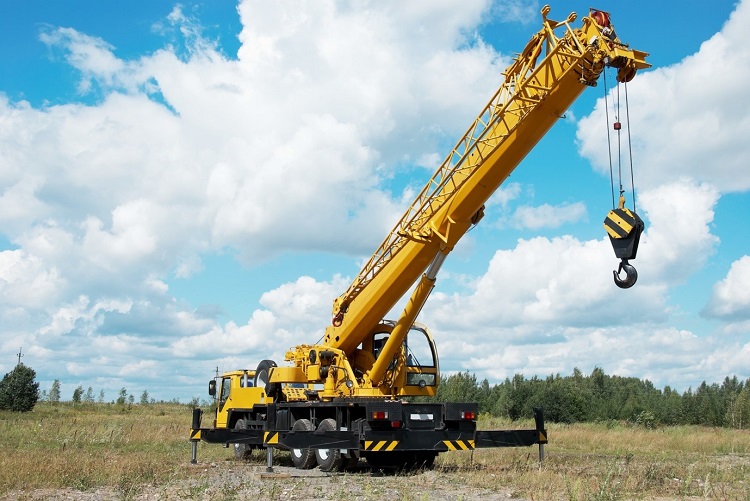Cranes are a key element to any large-scale construction job.
Most people are typically familiar with the sight of a tall crane building a skyscraper in a bustling metropolitan area.
However, there are several different types of cranes that can be used for all kinds of specific jobs in addition to the sky-high cranes used to erect tall buildings.
The type of crane needed for a given job is an important aspect to consider. Each type of crane can be extremely helpful if the right crane is chosen for the right job. Choosing the wrong crane can be a waste of both time and money on projects where both are extremely important.
Because selecting the right crane is imperative to the productivity and overall success of a construction job, the following breakdown of the different types of cranes and their uses should help you when trying to figure out which crane you need for your next job.
Keep reading to learn more.
Mobile Cranes vs Fixed Cranes
The first thing to consider when choosing a crane is whether you will need a mobile crane or a fixed crane.
Mobile cranes, as the name implies, are able to move around a singular job site or between different job sites. A mobile crane would be best suited for jobs in which the construction zone takes up a huge geographic area, includes several smaller sites that are nearby each other, or otherwise requires some transfer of materials.
Fixed cranes, on the other hand, are rooted to one specific spot on a job site and are not easily moved. Some are even transported to a construction site in pieces and are built on-site in one particular spot. A fixed crane is ideal for situations in which you do not need to transport materials, or do not need the crane itself to move across a large area or between sites.
Types of Cranes: Mobile
If you decide that a mobile crane is necessary for the job, the next step is choosing which type of mobile crane is best-suited for the specific jobs you need it for. Below are the five main types of mobile cranes.
Truck-Mounted Crane
As the name implies, these cranes are mounted on top of trucks and are arguably the most mobile type of crane. The arm of the crane, also called the boom, is mounted on top of a truck, which is referred to as the carrier.
These cranes are a must-have on sites where traveling from place to place is necessary. Additionally, truck-mounted cranes can be very time-efficient and cost-effective, as they require virtually no setup and can begin assisting on a job site as soon as they arrive.
The Hiab boom crane is a prime example of a truck-mounted crane that you can use on your next job.
Carry Deck Crane
Similar to the truck-mounted crane, the carry deck crane also has wheels. However, the carry deck crane is significantly smaller than most other cranes, making it very portable and able to squeeze into hard-to-reach places on a construction site.
Another benefit of carry deck cranes is their ability to rotate a full 360 degrees. While they do not arrive on a job site fully assembled, they are relatively easy to set up.
Rough Terrain Crane
As its name would lead you to believe, a rough terrain crane easily maneuvers over off-road or otherwise tricky terrain. These cranes are also fitted with wheels, providing them with excellent traction for moving over rough sections of land.
This crane is ideal for construction sites with varied landscapes, as this crane is guaranteed to be able to handle it all.
Crawler Crane
While similar in size to the rough terrain crane, the crawler crane has tracks instead of wheels. This allows it to maneuver swiftly over extremely soft ground.
Despite this, the crawler crane is not as mobile or portable as the other types of cranes listed above, making it better suited to long-term projects.
Floating Crane
Finally, a floating crane is most commonly used for jobs on or around bodies of water. It has similar capabilities to the other types of cranes mentioned previously but is particularly useful for jobs at sea.
Types of Cranes: Fixed
If you select a fixed crane for the job, you’ll then have to choose which type would work best for your specific project. The following list includes the five main types of fixed cranes.
Tower Crane
Tower cranes are controlled by an operating cab with a slewing engine that sits atop a mast, which rests on a secure concrete base. The jib extends horizontally from the mast. The luffing jib moves up and down, while the fixed jib moves side to side.
As mentioned above, tower cranes are most commonly used when erecting skyscrapers and other tall buildings.
Hammerhead Crane
This type of crane is most commonly used across a wide variety of jobs. Its construction involves a horizontal lever swiveling on a fixed vertical tower. Additionally, a trolley moves across the horizontal portion, a process known as racking.
This crane, as previously stated, is versatile and likely would work for several different types of jobs involving a fixed crane.
Bridge or Overhead Crane
This crane has several uses for industrial projects. In this configuration, the crane slides across a bridge of two steel beams that hang over the work being done.
This crane can be further categorized into two different types:
Gantry Crane
Gantry cranes are built on and move across a track. They are typically used for moving cargo onto and off of boats.
Jib Crane
Jib cranes are permanently installed on a construction site. Because of this, they are best suited for repetitive jobs.
Bulk-Handling Crane
This type of crane is best suited for carrying large amounts of heaving materials, such as gravel or coal. It uses a grabbing mechanism that allows it to collect, lift, and haul materials.
Telescopic Crane
Finally, a telescopic crane involves a boom with a hydraulic system that allows it to change lengths. While the crane itself is immobile, it is commonly mounted on wheels for brief transport.
The main benefit of this crane is its increased versatility, as it is used for jobs like long-term construction or short-term disaster cleanup.
Getting the Job Done
Now that you’ve chosen the proper crane for the job, you should be able to begin construction. By taking the time to fully consider which crane you need, you will save time and money, leading to a job well done.
Did you enjoy learning about different types of cranes? If so, be sure to check out the rest of our website for more interesting content!






